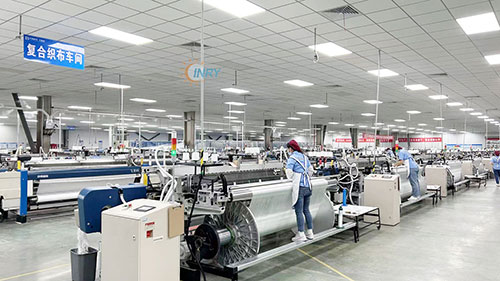Fire Blanket Applications: From Homes to Large-Scale Industries
Overview:Explore the versatile applications of fire blankets across residential, commercial, and industrial settings. Learn how this essential safety tool combats fires effectively while minimizing damage.
Fire blankets are a critical component of fire safety systems, offering a simple yet powerful way to suppress small fires by cutting off oxygen. While commonly associated with kitchens, their utility spans far beyond homes. From laboratories to oil refineries, fire blankets are indispensable in diverse environments. This blog dives into their applications across scales, highlighting their adaptability and importance in modern fire safety protocols.

1. Residential Applications: Safeguarding Homes
Fire blankets are a first-line defense in households, particularly in high-risk areas:
Kitchen Fires: Ideal for smothering grease fires or stovetop flare-ups without the risk of spreading flames (unlike water). Their non-toxic design ensures safe use near food3.
Electrical Appliances: Quickly extinguishing small fires in outlets, microwaves, or overloaded circuits.
Garages and Workshops: Addressing sparks from DIY projects or flammable liquid accidents.
Emergency Escape: Thick, heat-resistant blankets can protect individuals from radiant heat while evacuating.
Advantages: No chemical residue, reusable (if undamaged), and requires minimal training.

2. Commercial and Institutional Use
Businesses and public spaces rely on fire blankets for specialized scenarios:
Restaurants and Catering: Commercial kitchens use industrial-grade blankets to handle larger grease fires or oven mishaps.
Schools and Laboratories: Safely suppressing chemical spills or alcohol burner accidents in science labs.
Healthcare Facilities: Protecting sensitive equipment from electrical fires without damaging electronics.
Offices: Addressing paper fires or overheating devices like servers.
Case Study: A 2024 report highlighted how Beijing E-Town’s smart traffic systems integrated fire blankets in control rooms to protect AI-driven infrastructure from electrical fires.

3. Industrial Applications: Tackling High-Risk Environments
In industries with volatile materials, fire blankets are engineered for extreme conditions:
Oil and Gas Facilities: Smothering hydrocarbon fires in refineries or drilling sites. Specialized blankets resist chemical corrosion313.
Manufacturing Plants: Containing fires involving machinery, lubricants, or metalworking sparks.
Energy Sector: Used in power plants to manage electrical panel fires or battery storage unit incidents (e.g., lithium-ion battery thermal runaway)3.
Transportation: Deployed in tunnels or cargo ships to control fires in confined spaces. For instance, the Runehamar tunnel fire tests emphasized the need for rapid fire-suppression tools in large-scale infrastructure13.
Key Features:
High-temperature resistance (up to 1000°C+) with multi-layer designs3.
Compatibility with hazardous materials like acids or molten metals.

4. Emerging Innovations and Large-Scale Integration
Advancements in materials and technology are expanding fire blanket applications:
Smart Fire Blankets: IoT-enabled blankets that alert safety systems when deployed, as seen in China’s AI-driven industrial safety models10.
Aerospace and EVs: Lightweight blankets for electric vehicle battery fires or spacecraft emergencies.
Environmental Protection: Eco-friendly materials align with sustainability goals, such as recyclable ceramic fiber blankets.
Choosing the Right Fire Blanket
Selecting a blanket depends on the environment:
Certifications: Look for EN 1869, UL, or GB/T 35774 compliance3.
Size: Ranges from 1.2m×1.2m (household) to 1.8m×1.8m (industrial).
Material: Fiberglass for general use; chemical-resistant coatings for labs or factories3.
Maintenance and Best Practices
Storage: Keep in dry, accessible locations with clear labeling.
Inspection: Check for tears or degradation every 6 months; replace every 5 years.
Training: Regular drills ensure quick deployment during emergencies.
From kitchen countertops to sprawling industrial complexes, fire blankets bridge the gap between rapid response and minimal collateral damage. Their versatility, coupled with advancements in material science and smart technology, positions them as a cornerstone of modern fire safety strategies. By understanding their applications and adhering to maintenance protocols, individuals and organizations can significantly mitigate fire risks.
Link about fire blankets: fire blankets wholesale





